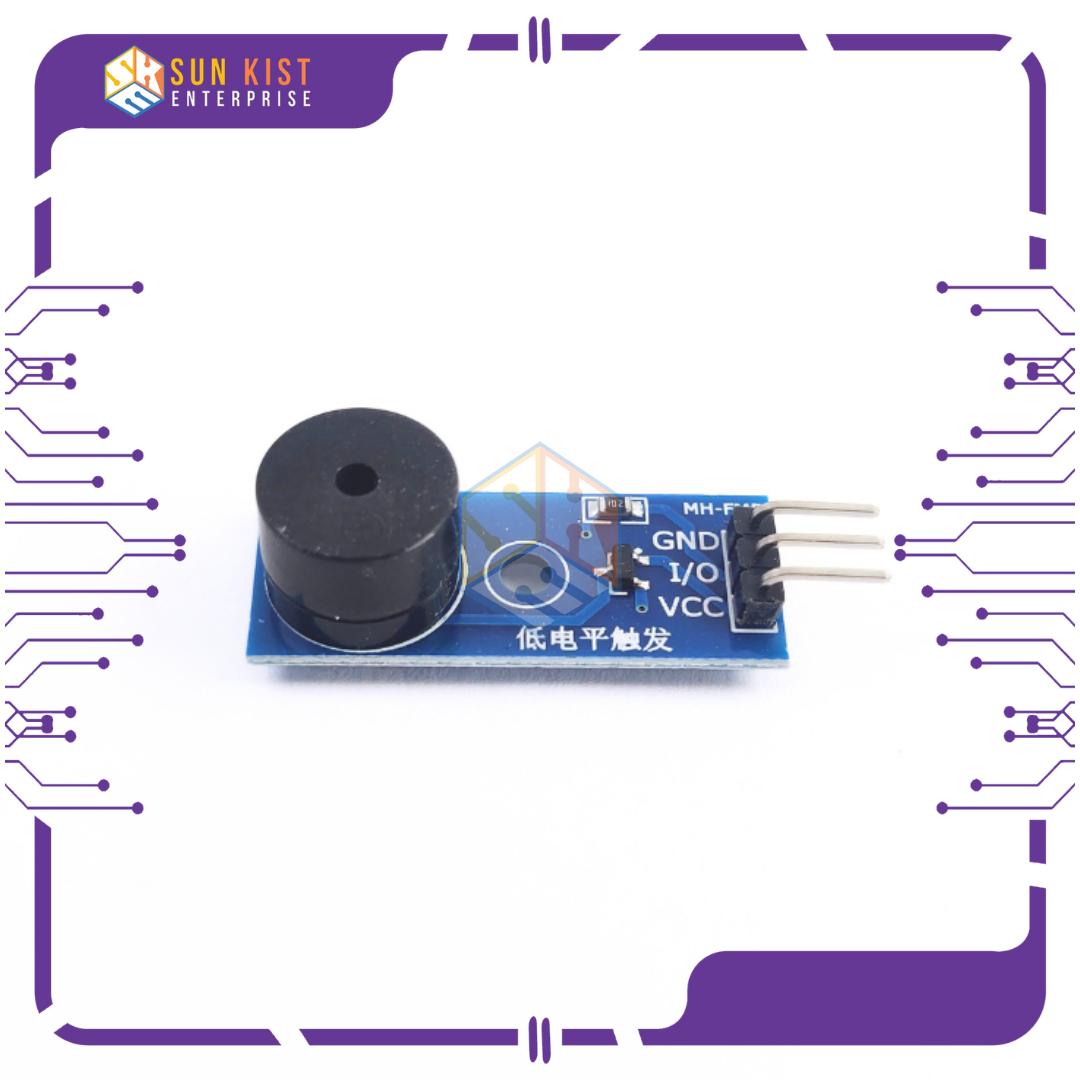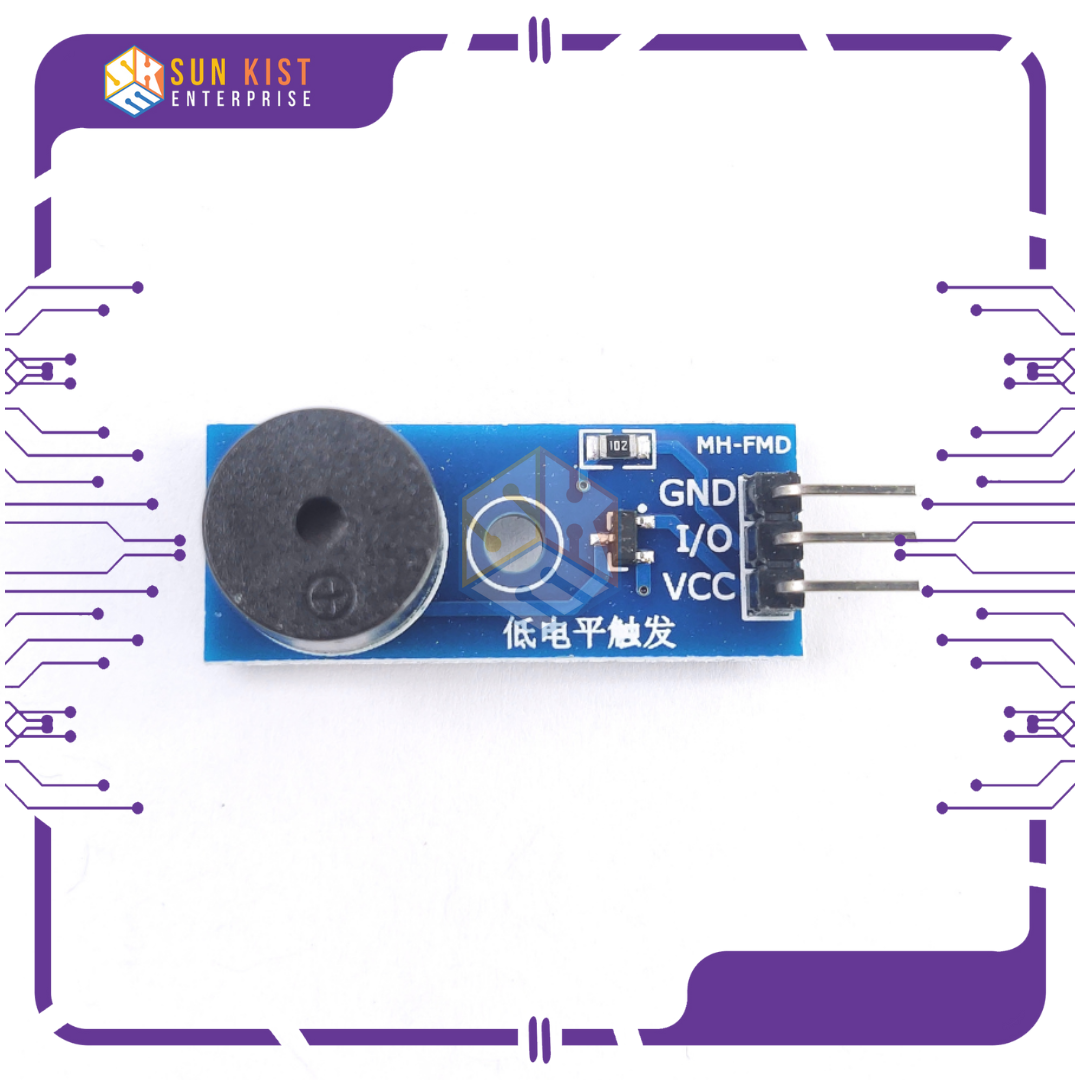Description
A Passive Buzzer Module is an electronic component used to produce audible sound in various electronic projects and applications. It is called “passive” because it doesn’t generate its own oscillating sound signal; instead, it responds to an external oscillating signal, producing sound based on the input it receives. Here’s a description of its key features and functions:
**1. Audible Sound Production:** The primary function of a passive buzzer module is to produce audible sound. When it receives an alternating current (AC) signal, it generates sound by rapidly vibrating a diaphragm or piezoelectric element inside the module.
**2. External Signal Required:** Unlike active buzzers, which generate their own oscillating signal, passive buzzers require an external signal source, typically from a microcontroller, timer circuit, or other electronic device, to produce sound.
**3. Two-Wire Connection:** Passive buzzer modules typically have two wires for connection. One wire is for the positive (anode) connection, and the other is for the negative (cathode) connection. By connecting these wires to an external source, you can control the sound output.
**4. Sound Frequency:** The sound produced by a passive buzzer is determined by the frequency of the external signal applied to it. Different frequencies result in different tones or notes, allowing you to create melodies or alarms.
**5. Simple Control:** Passive buzzers are easy to control and are often used in simple projects where basic sound notifications or melodies are required.
**6. Common Use Cases:** Passive buzzer modules are commonly used in various applications, including:
– Alarms and notifications: They can be used to create audible alarms or alerts in devices such as security systems, timers, and alarms.
– Electronic games: Passive buzzers can produce sound effects or melodies in games and interactive electronic toys.
– Learning and education: They are used in educational kits to demonstrate basic electronic principles.
– DIY projects: Hobbyists and makers often use passive buzzers in DIY electronics projects for creative sound effects.
**7. Versatility:** Passive buzzer modules are available in different sizes and designs, making them versatile and adaptable to various project requirements.
**8. Tone Generation:** By varying the frequency and duration of the input signal, you can produce different musical notes and melodies. This makes passive buzzers useful for basic musical applications.
**9. Low Cost:** Passive buzzer modules are affordable and readily available, making them a cost-effective choice for adding sound to electronic projects.
**10. Operating Voltage:** The voltage required for the operation of passive buzzer modules may vary, but they are often compatible with common supply voltages such as 3.3V and 5V.
In summary, a Passive Buzzer Module is a simple and cost-effective component for generating audible sound in electronic projects. Its ease of use and versatility make it a popular choice for adding sound effects, alarms, and melodies to various applications, from DIY projects to educational demonstrations.











Reviews
There are no reviews yet.